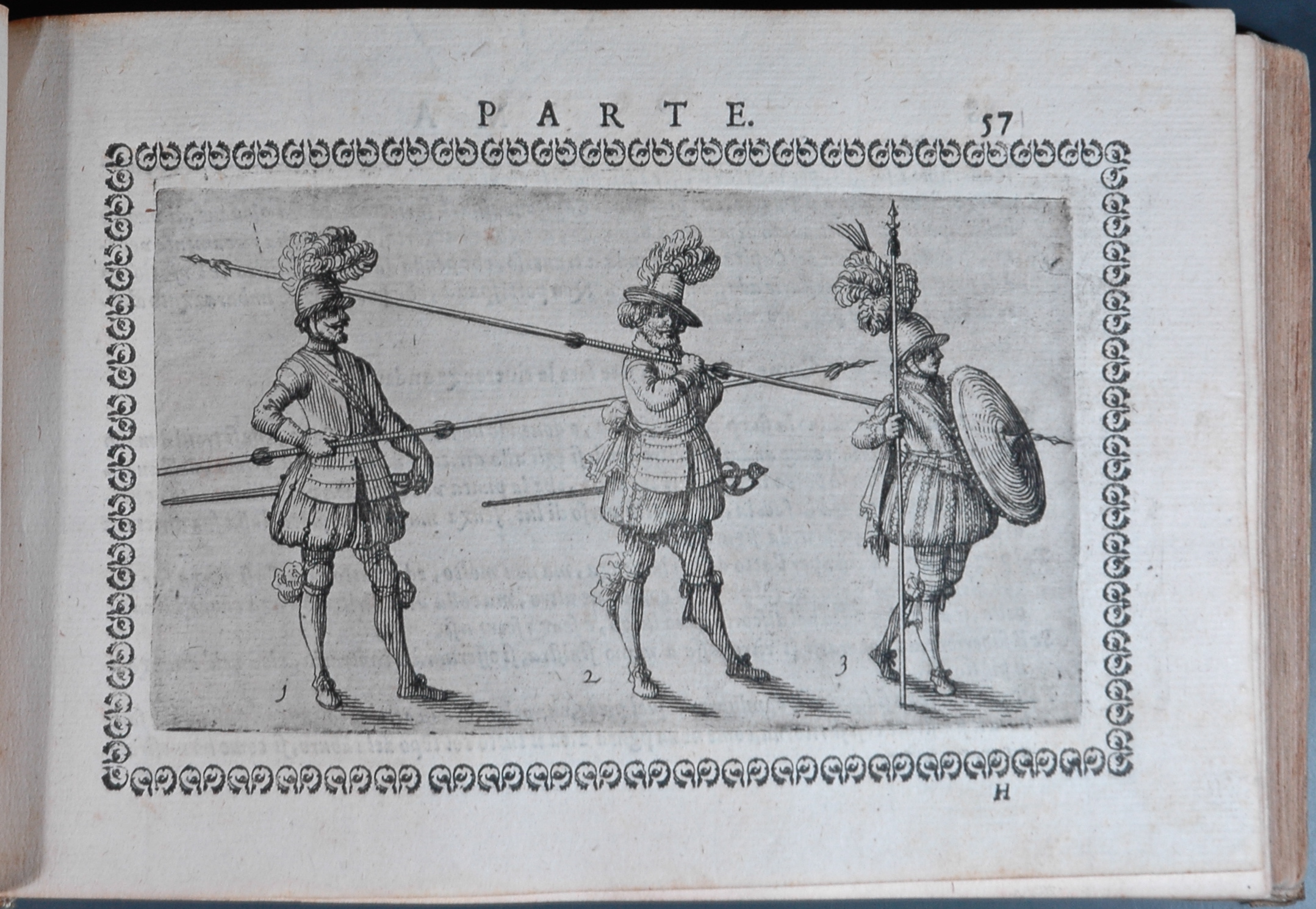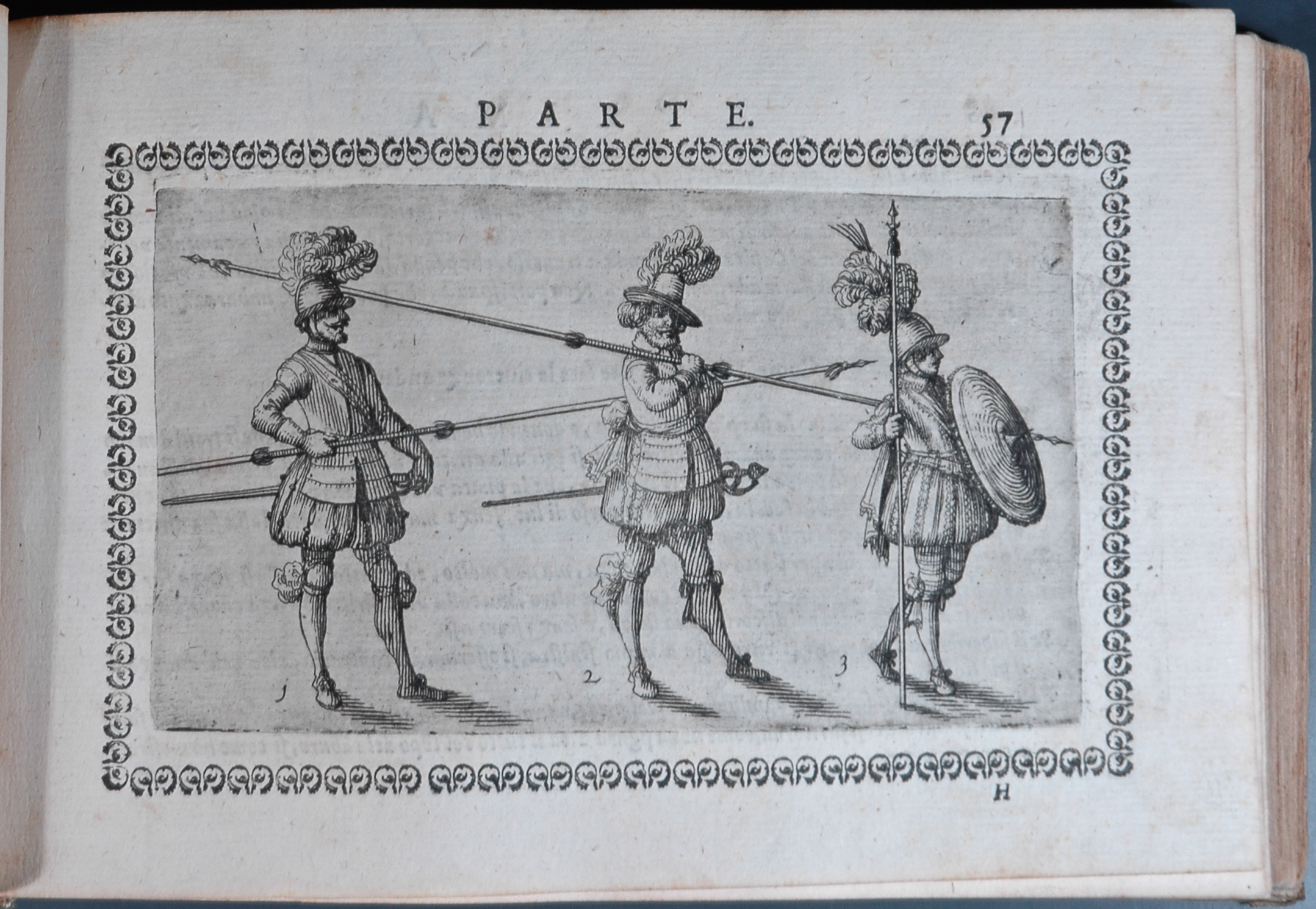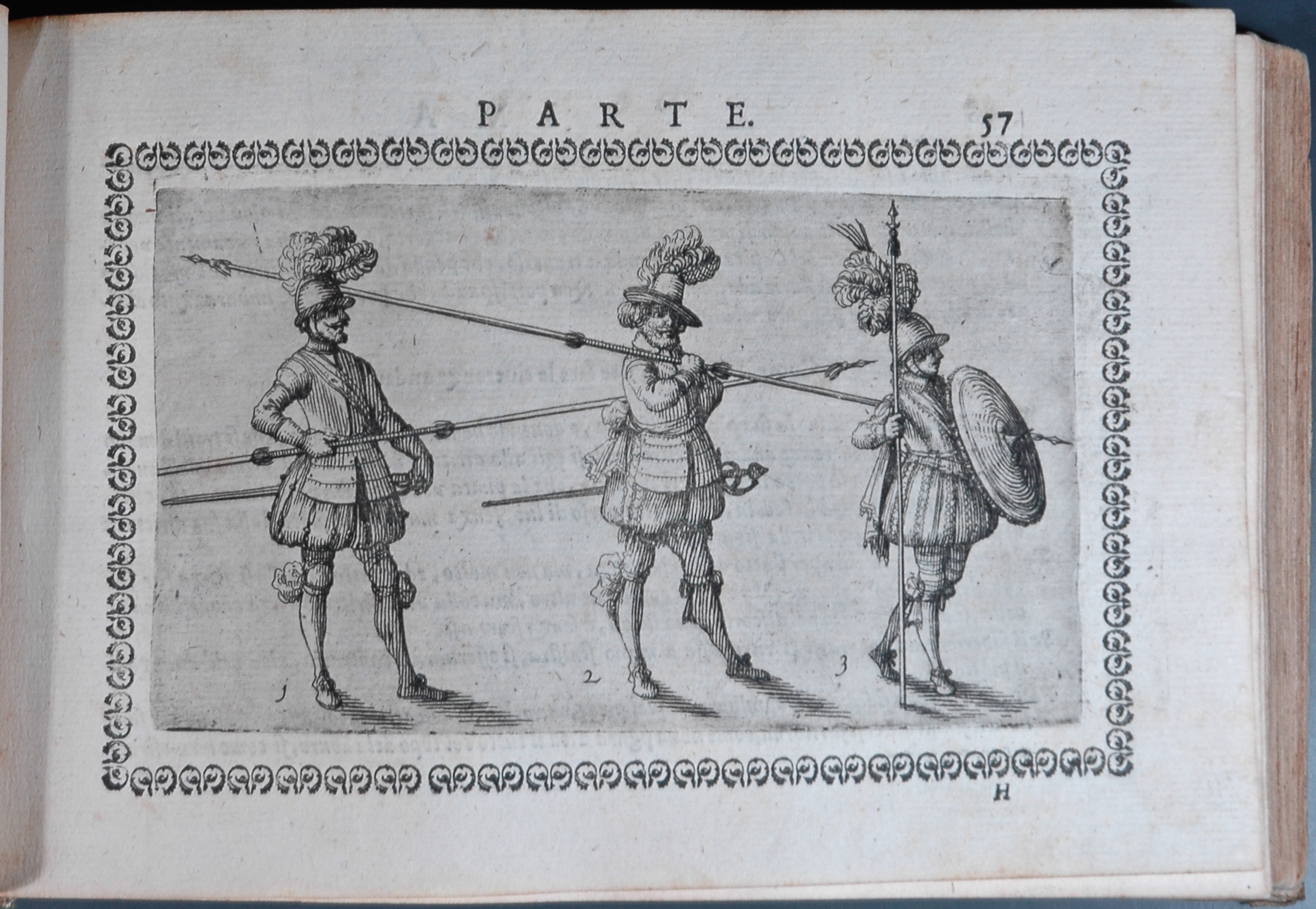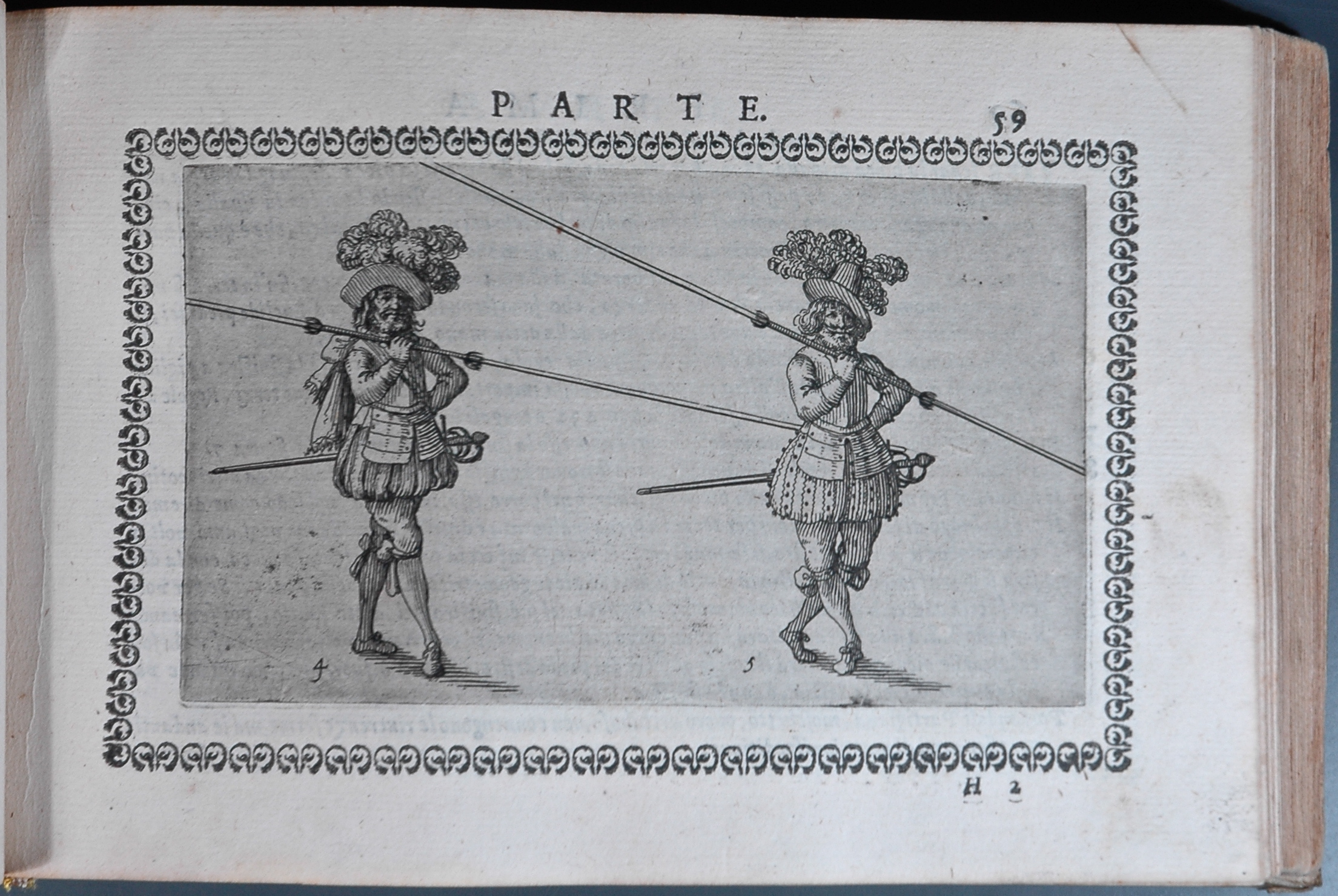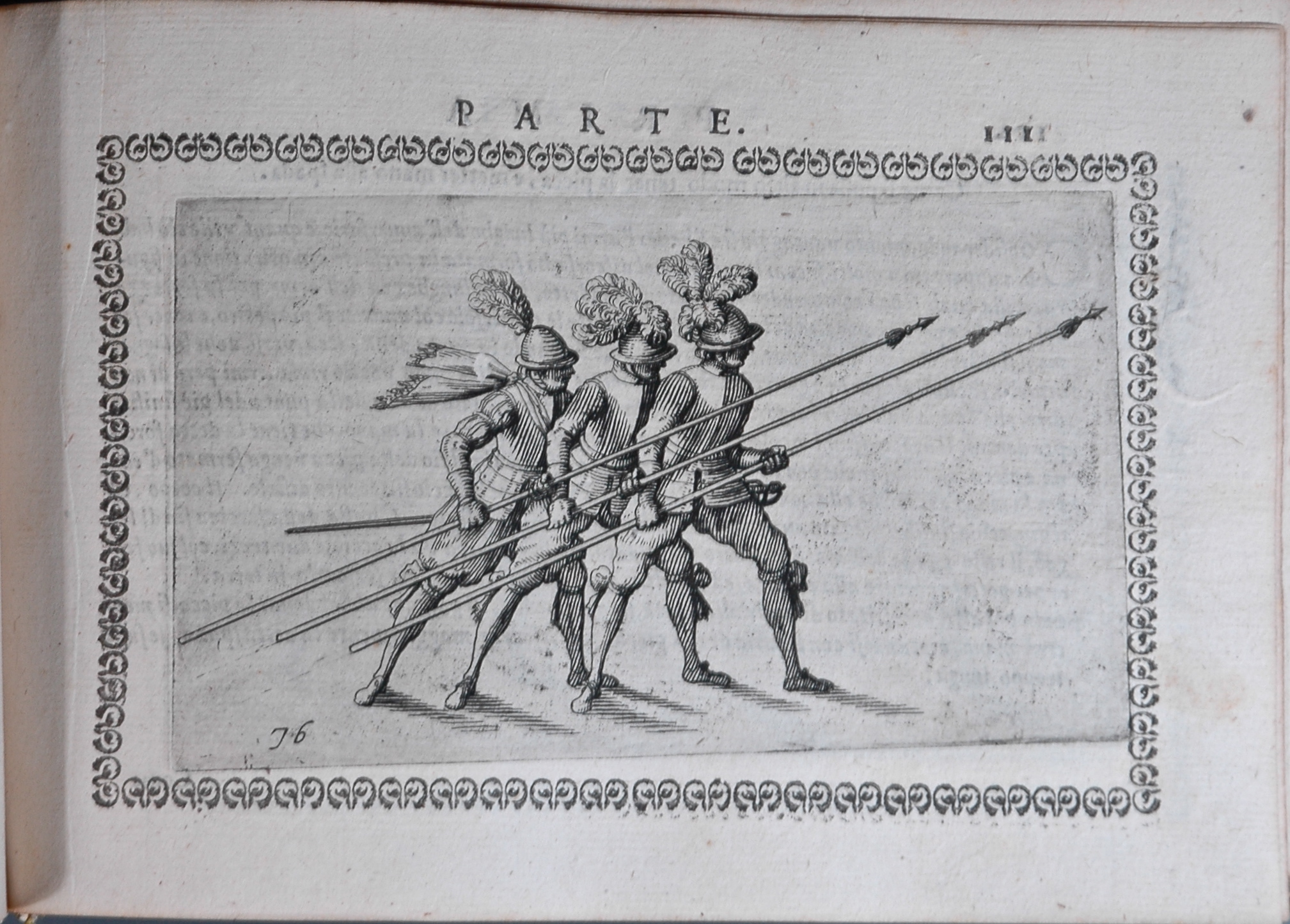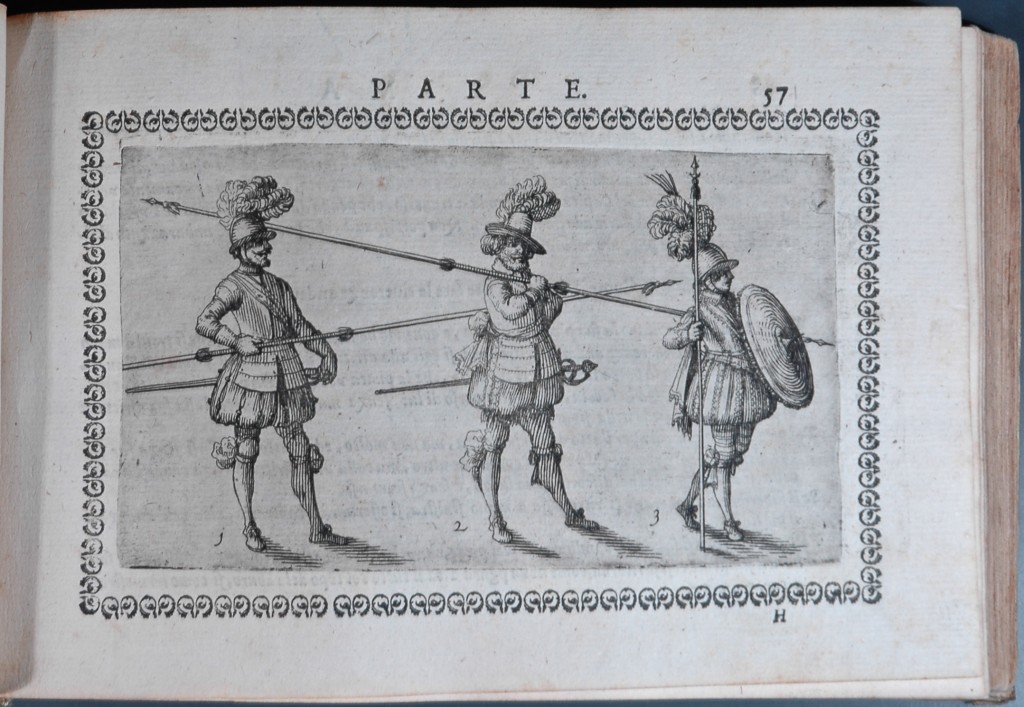PISTOFILO, Bonaventura
Oplomachia... e col mezzo delle figure si tratta per via di teorica, e di pratica del maneggio e dell’uso delle armi. Distinta in tre discorsi di Picca, d’Alabarda e di Moschetto
Siena, Hercole Gori, 1621£7,950.00
FIRST EDITION, oblong 4to, pp. [viii], 1-64, 57-123, [i], 123-256, 253-315, [i]. Roman and italic letter, floriated initials, engraved t-p, Kenelm Digby’s and author’s portraits following ms. note on pastedown “1901 cat138 … L140”. A good clean copy in contemp limp vellum within vellum slipcase gilt stamped ‘Torre del Palasciano’, ms title on spine, lacks ties.
Rare first edition of this work on the use of pike, halberd and musket with 53 very precise and beautiful engravings, somewhat like Callot’s in style and fineness. 34 plates are dedicated to the pike, 4 to the halberd and 15 to the musket. they seemed to have been engraved by Bertelli (Francesco(?)), who worked at Padua between the end of the sixteenth and the beginning of the seventeenth centuries (Benezit). The text explains the history and use of each of these weapons and the particular action or manoeuvre depicted in each plate. Each of the figures illustrated is numbered, corresponding to a numbered paragraph of the explanatory text, making the manual of very practical application.
Bonaventura Pistofilo from Pontremoli was a notary for the Este family, then chancellor to Duke Alfonso I d’Este, and a close friend of Ariosto. This work was dedicated to Sir Kenelm George Digby with his striking youthful portrait, probably done during his three years in Europe between 1620 and 1623. Digby (1603-1665) was an English author, diplomat, naval commander and one of the most fashionable figures of his day. He was known for his esoteric approach to science and advocacy of the “powder of sympathy”, a ‘healing’ powder of vitriol applied to a bandage taken from the wound which healed without any contact with the patient.
Ferdinando Palasciano (1815 – 1891) was an Italian physician and politician. He argued that any wounded or sick soldier was neutral on the battlefield and should be helped by any available doctor. Palasciano’s speech at the International Congress at the Accademia Pontoniana of Naples (1861), had widespread influence and was the basis of the First Geneva Convention which founded the Red Cross (1864).
Brunet, Suppl, II, p. 244: “89ff. Pour la Picca, 95 pour l\\\\\\\\\\\\\\\'Allebarda, et 30 pour le Moschetto. Au 2e f., dans un encadrement, se trouve le portr. de George Digby, auquel le livre est dédié, et au 4e le portrait de l\\\\\\\\\\\\\\\'auteur. Les gravures semblent avoir été gravées par Bertelli; il en faut 53, dont 34 pour l\\\\\\\\\\\\\\\'exercice de la pique, 4 pour la hallebarde et 15 pour le mousquet” ; Graesse, V, p. 305 ;Gelli 277 “Beau volume très rare et recherché”; Thimm p.226; Cat.Vinciana 1457: «Uno dei più rari e importanti trattati di scherma, interessante per le 125 pittoresche posizioni di soldati in esercizio». Cockle 742.In stock


